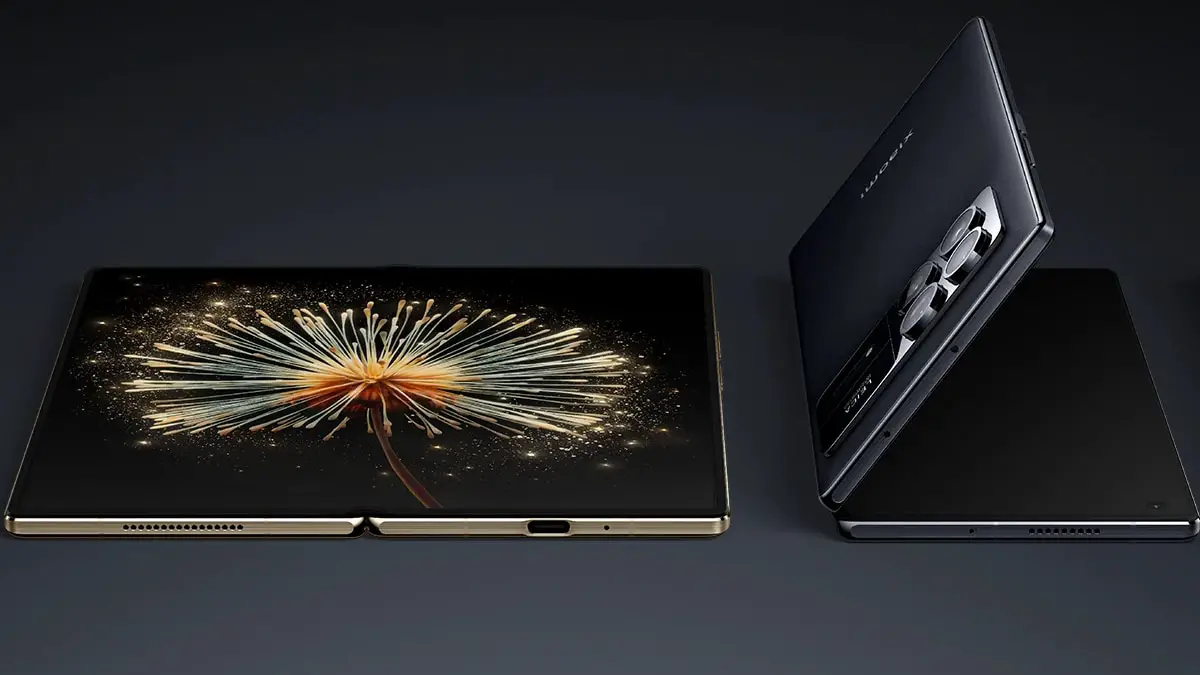Xiaomi Mix Fold 3 — the latest foldable phone from the Chinese smartphone brand was launched on Monday, August 14 in China. The book-style foldable runs on the Snapdragon 8 Gen 2 SoC and packs Leica-branded quad rear cameras. The debut of Mix Fold 3 less than a few weeks after Samsung released the Galaxy Z Fold 5 last month indicates that stiff competition in the foldable smartphone is heating up. With the new Galaxy Z Fold 5 and Xiaomi Mix Fold 3, both the tech giants are trying to combine smartphone and tablet experience. The Xiaomi Mix Fold 3 might emerge as an alternative to the Galaxy Z Fold 5, if the former comes to international markets outside China.
Let’s compare Xiaomi’s Mix Fold 3 and Samsung’s Galaxy Z Fold 5 based on their design, features, performance, and battery.
Xiaomi Mix Fold 3 vs Samsung Galaxy Z Fold 5: Price
The price of Xiaomi Mix Fold 3 starts at CNY 8,999 (nearly Rs. 1,02,000) for the 12GB RAM + 256GB storage model in China. The 16GB RAM + 512GB model is priced at CNY 9,999 (nearly Rs. 1,14,500), while the 16GB RAM + 1TB storage model costs CNY 10,999 (nearly Rs. 1,26,600).
Samsung’s Galaxy Z Fold 5, on the other hand, is a bit more expensive with a starting price tag of Rs. 1,54,999 for the base 12GB RAM + 256GB RAM and storage configuration. The 512GB and 1TB storage variants cost Rs. 1,64,999 and Rs. 1,84,999, respectively. The pricing would give Xiaomi undoubtedly an upper hand in the competition, but the new Xiaomi Mix Fold 3 is currently available only in China.
Xiaomi Mix Fold 3 vs Samsung Galaxy Z Fold 5: specifications
Both phones run Android 13 with each brand’s own skin on the top. The Xiaomi Mix Fold 3 comes with MIUI Fold 14, while the Galaxy Z Fold 5 ships with One UI 5.1.1.
On the Xiaomi Mix Fold 3, users get a larger 8.03-inch foldable E6 AMOLED LTPO inner display with a 2K resolution and up to 120Hz refresh rate. The Galaxy Z Fold 5, in contrast, is equipped with a 7.6-inch QXGA+ Dynamic AMOLED 2X Infinity Flex display on the inside with an adaptive refresh rate ranging from 1Hz to 120Hz. The Xiaomi handset features a 6.56-inch full-HD+ AMOLED cover display, while Samsung’s offering is equipped with an external 6.2-inch full-HD+ Dynamic AMOLED 2X Display.
The processor powering both phones is identical. The Xiaomi Mix Fold 3 runs on Qualcomm’s Snapdragon 8 Gen 2 SoC, paired with up to 16GB of RAM and a maximum of 1TB storage. The Galaxy Z Fold 5 features a custom Snapdragon 8 Gen 2 Mobile Platform for Galaxy SoC under the hood, along with up to 12GB of RAM and up to 1TB of storage.
The Xiaomi Mix Fold 3 and Galaxy Z Fold 5 have different rear camera setups. The former packs a Leica-tuned quad rear camera unit, comprising a 50-megapixel Sony IMX 800 primary camera with optical image stabilisation (OIS), 12-megapixel wide-angle sensor, 10-megapixel periscope sensor, and 10-megapixel telephoto sensor. The Galaxy Z Fold 5 has a triple rear camera setup comprising a 50-megapixel wide-angle camera with OIS, a 12-megapixel ultra-wide-angle camera, and a 10-megapixel telephoto camera. It also includes a 10-megapixel camera on the cover display.
For selfies and video calls, the Xiaomi Mix Fold 3 sports a 20-megapixel camera. The Galaxy Z Fold 5, on the other hand, has a 4-megapixel under-display camera.
Xiaomi is offering the Mix Fold 3 in 256GB, 512GB, and 1TB storage options, while the Galaxy Z Fold 5 is available in 256GB, 512GB, and 1TB storage variants. Connectivity options and sensors are almost similar on both foldable. Samsung’s foldable comes with support for the S Pen stylus. Both models sport fingerprint sensors for authentication as well. The Galaxy Z Fold 5 has an IPX8 rating for water resistance, while Xiaomi’s phone has no such rating.
The Xiaomi Mix Fold 3 is backed by a 4,800mAh battery with support for 67W wired Turbo fast charging and 50W wireless charging. Meanwhile, the Galaxy Z Fold 5 features a slightly smaller 4,400mAh battery and supports 25W wired charging along with Fast Wireless Charging 2.0 that offers 15W charging speeds. It also offers Wireless PowerShare for charging other wireless charging-supported devices.
Source link











Leave a Reply